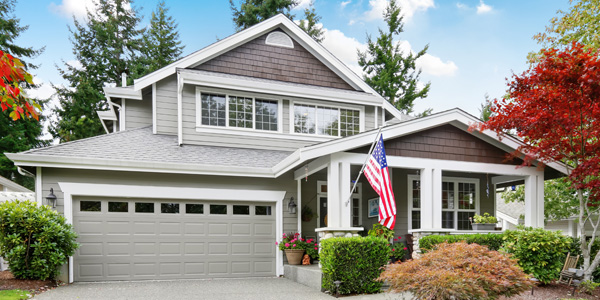REVERSE MORTGAGE “OVERLAY”
Over the years, you’ve been the one in charge of guiding the direction of the investments, not only in your joint account, but in your own and your wife’s 401Ks (now IRA rollover accounts). Asset allocation has been the guiding principle throughout, but with both of you now entering your late seventies, you feel the need to start being even more cautious in your choices. The very recent drop in the market has you worried, and you’ve done some rebalancing in the rollover accounts, attempting to be strategic about the timing of mandatory IRA withdrawals (and of the choice of which assets to sell for the RMDs).
It’s comforting that, over the past two years, you have paid off the second mortgage you took out in order to do a total remodel of the house you’ve owned for the past thirty years, where you’re hoping to spend the rest of your lives. However, because that debt elimination was made possible only because of extra income from a long (but now ended) consulting gig; going forward (along with everyone else), you’re concerned about the escalating costs of utilities, gasoline, groceries – and your prescription medications. Pretty soon, you realize, you will need to increase “draws” from the joint account.
Given your intention to “age in place”, you might apply for a HECM reverse mortgage, set up as a “standby line of credit”. The unused portion of your home equity would be credited with growth at the same rate of interest as that being charged on the portion that represents borrowed funds, and you could consider that as representing part of the “loaner” asset portion of your allocation.
Without in any way attempting to offer either investment of tax planning advice, we’d like to suggest you consider your own housing wealth as to be an important element in your asset allocation planning. Portfolio managers sometimes incorporate “overlays” using options or derivatives to reduce risk by offsetting one type of investment “against” the other. One of the advantages is that the managers can “adjust” the level of risk without incurring the transaction costs of buying or selling the stocks.
In a sense, through a reverse mortgage, your housing wealth would be an “overlay”, serving as a “backup” source of funds should, as you mentioned, your living costs escalate — or as emergency needs arise in the future. Unlike either your original mortgage on the home or the second mortgage, with a reverse mortgage, no monthly mortgage payments* are required. Meanwhile, any un-borrowed portion of your HECM line of credit will grow at the same rate as the interest charge on borrowed funds.
You mentioned being “strategic” about the timing of mandatory IRA withdrawals and the choice of which assets to sell in taking those RMDs. A HECM reverse mortgage might serve as yet another important way to be “strategic” in managing your financial affairs.
https://mutualreverse.com/david-garrison
*Borrower must occupy home as primary residence and remain current on property taxes, homeowner’s insurance, the costs of home maintenance, and any HOA fees. David Garrison, NMLS ID 1595194. Mutual of Omaha Mortgage, Inc. dba Mutual of Omaha Reverse Mortgage, NMLS ID 1025894. 3131 Camino Del Rio N 1100, San Diego, CA 92108. Indiana-DFI Mortgage Lending License 43321. Michigan 1st Mortgage Broker/Lender/Servicer Registrant FR0022702. These materials are not from HUD or FHA and the document was not approved by HUD, FHA or any Government Agency. Subject to credit approval. For licensing information, go to: www.nmlsconsumeraccess.org
Equal Housing Lender









